New Boston Historical Society
New Boston, New Hampshire
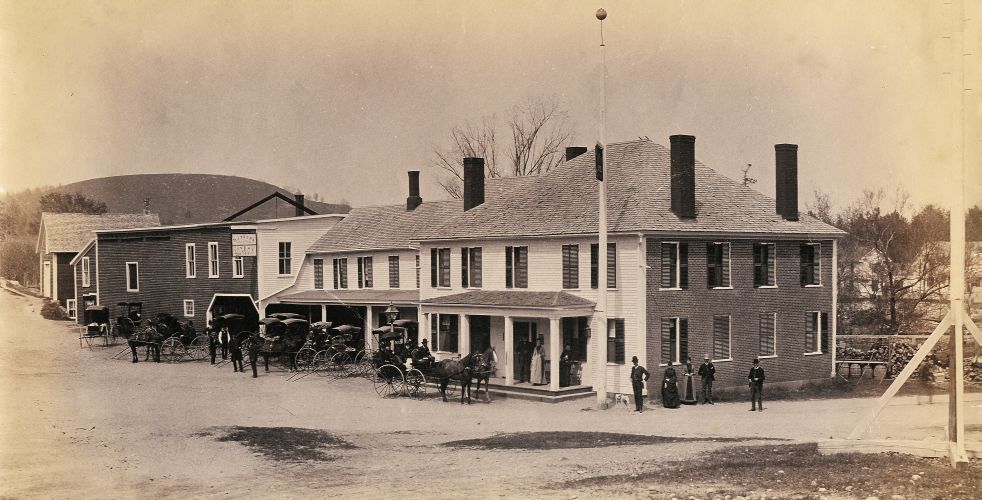
The Tavern
A Hotel on New Boston's Central Square from 1828(?)-1937
In December of 1828, Dr. John Whipple applied for a liquor license as a taverner at his house on the new road. A hotel was built around this time where the TD Bank now stands, on the west side of the Route 13 bridge. This once was a stopping place for the stagecoach on its way from Boston MA to Newport NH.
The photo above dates from the 1870s. The building may date from 1840 or earlier. Two details from this photo are shown below:
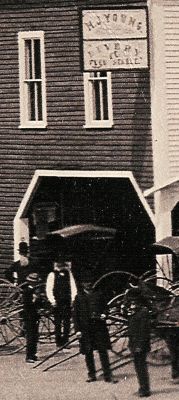
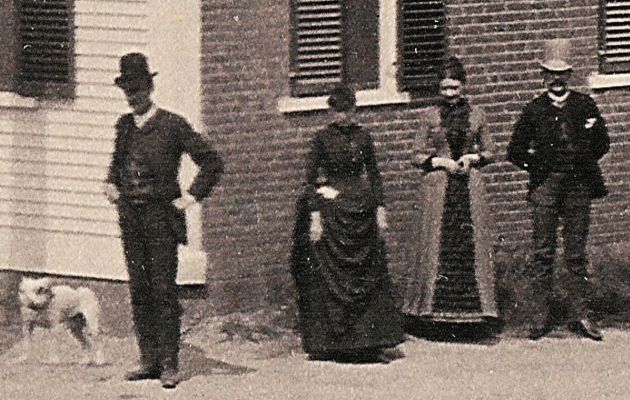
The tavern was called the Columbian Hotel from 1871-1880 when it was owned by Henry Young, whose name appears on the livery sign in the photos above.
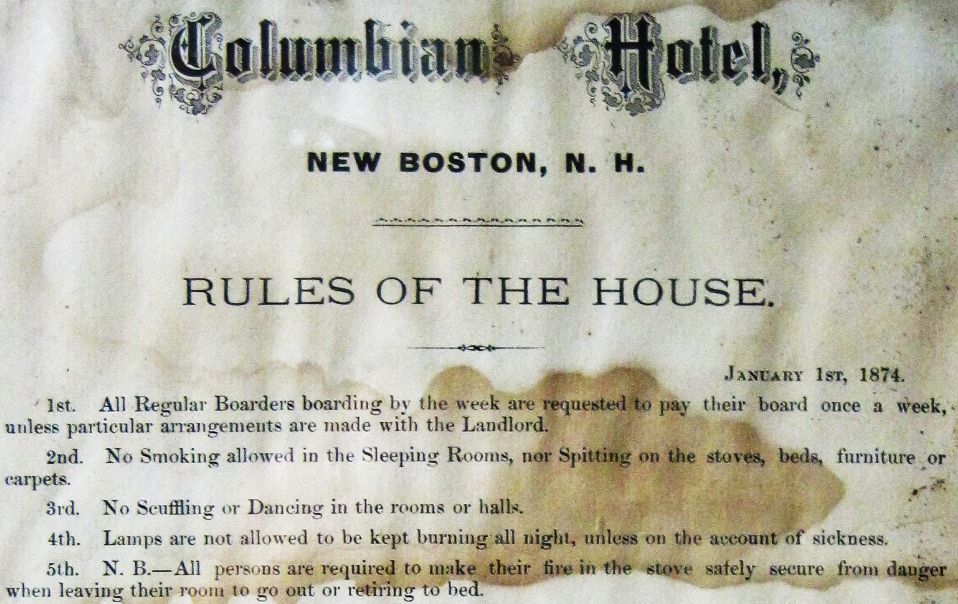
The Rules of the House included "No Spitting on the stoves" and "No Scuffling or Dancing in the rooms or halls."

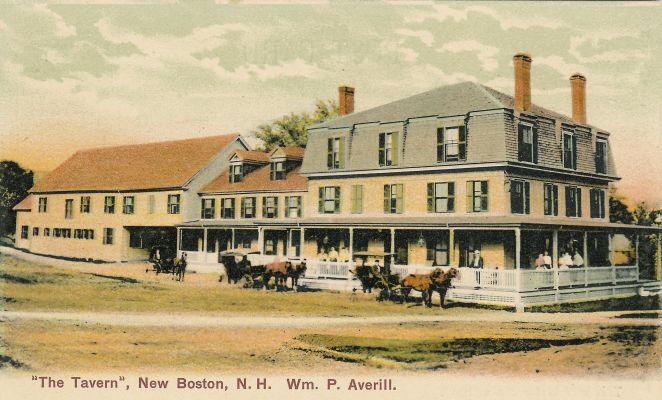
William Averill was the Tavern's proprietor from 1903 to 1914, after the 1893 renovation.
The Tavern - a third story is added in 1893
1893 was a good year to buy and renovate a New Boston hotel. In that year the railroad linking New Boston to Manchester was completed. The railroad depot was a short walk from the Tavern, and a tavern carriage was available for hotel guests.
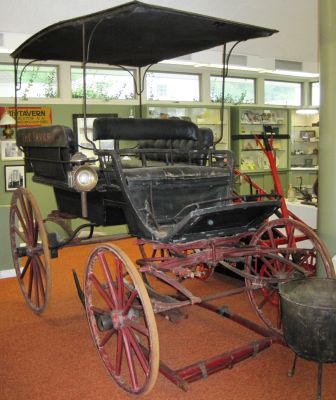
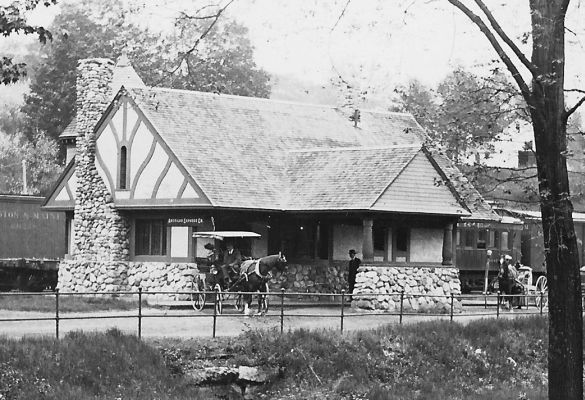
The Tavern Carriage, now on display in our museum, can be seen in this old photo of the railroad depot.
Inside The Tavern
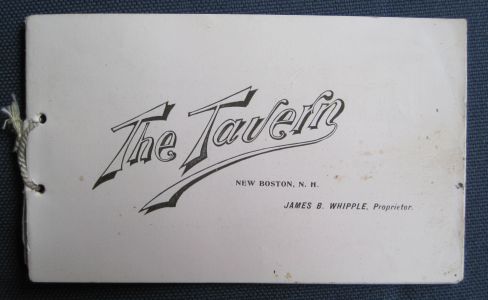
The only pictures we have of the Tavern's interior are from a 3x5 inch pamphlet which James B. Whipple printed for his guests.
The black & white photos from the pamphlet have been enlarged for your viewing pleasure.
James owned the Tavern from 1893 until his death in 1899.
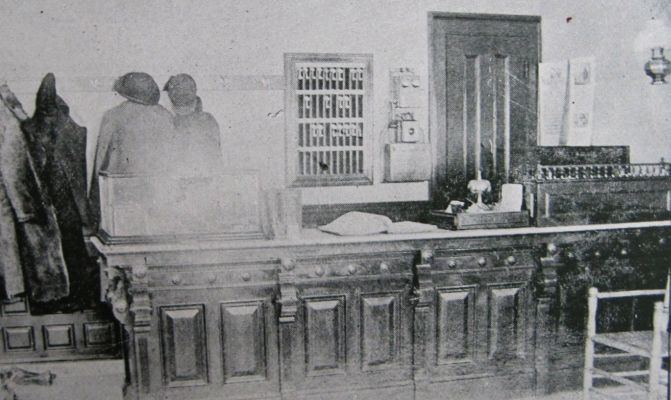
In the office there was a cherry wood check-in counter and a mosaic marble floor.
Note the keys hanging on the wall to the left of the telephone.
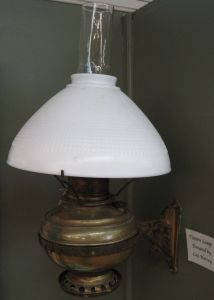
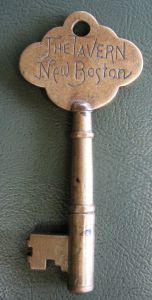
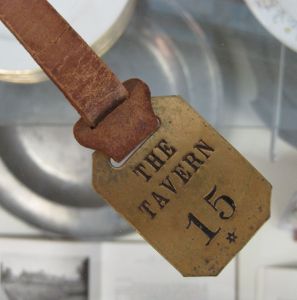
The office wall lamp and a room key are on display in our museum.
The brass tag on a long leather strip is probably a livery tag used to keep track of horses boarded overnight for travelers.
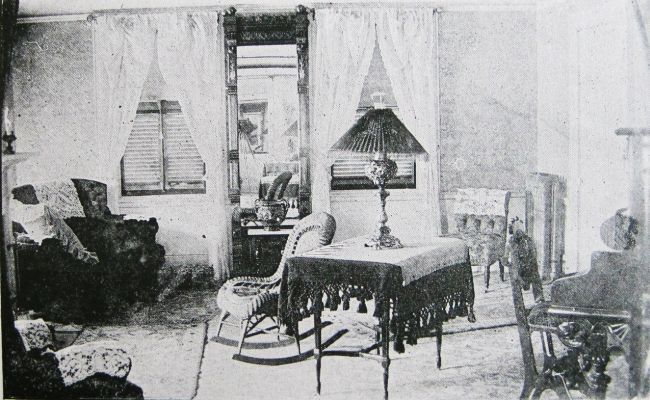
The Tavern pamphlet mentions steam heat; a radiator may be seen in the corner of the parlor.
There are no photos of guest rooms in the brochure. These may have been plainly furnished.
We are assured that "The toilet and bath rooms are supplied with hot as well as cold water."
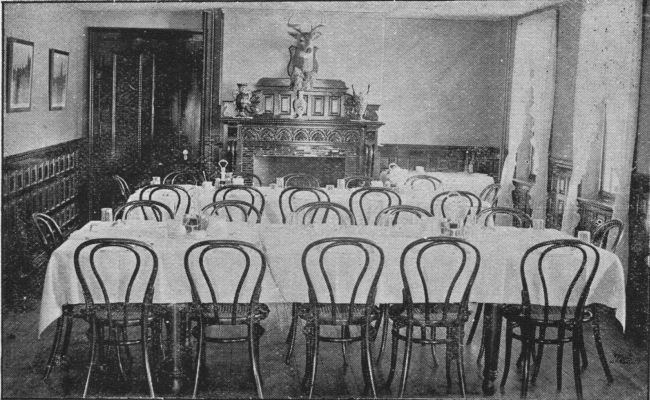
The Dining Room is described as "cozy and home-like". A buck's head is mounted over the fireplace.
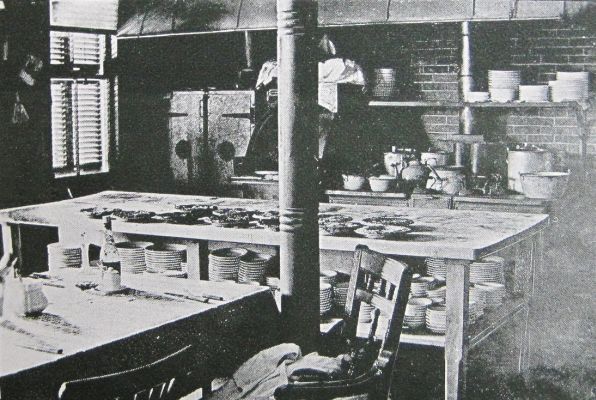
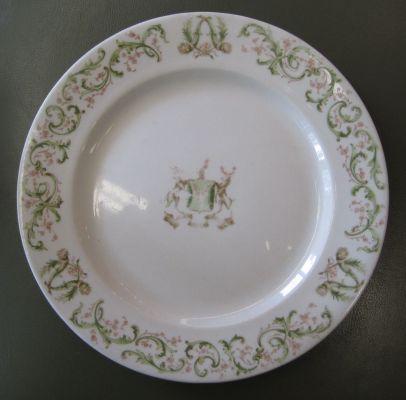
Plates of tasty food on the kitchen work table are ready to be served.
(A few of the tavern plates are in our museum's collection; the tasty food is not.)
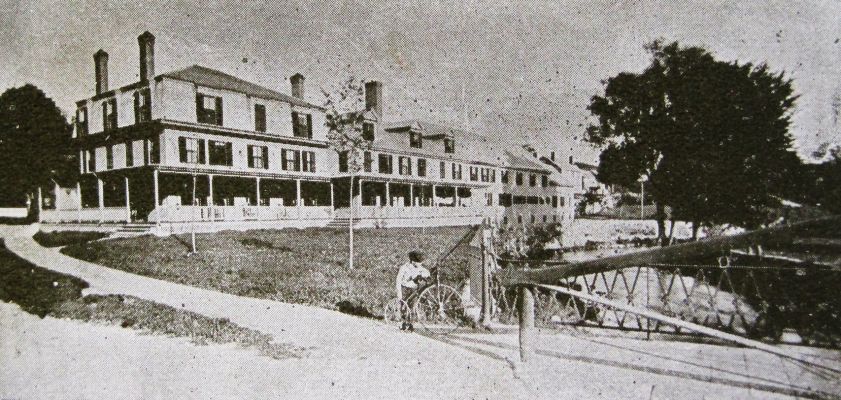
A river side view of the tavern from Whipple's pamphlet.
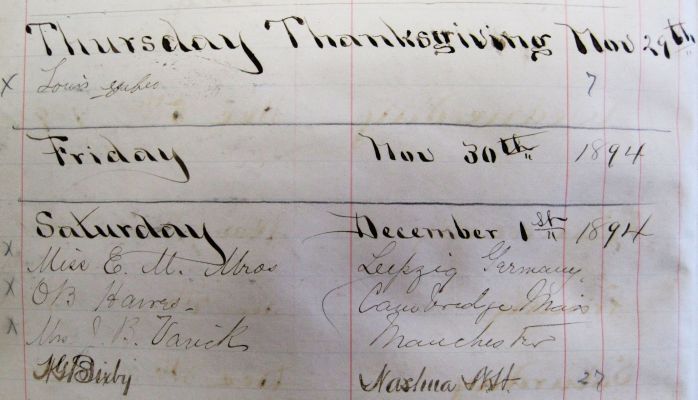
An entry from the 1894 volume of the Tavern ledger shows a visitor from Leipzig, Germany.
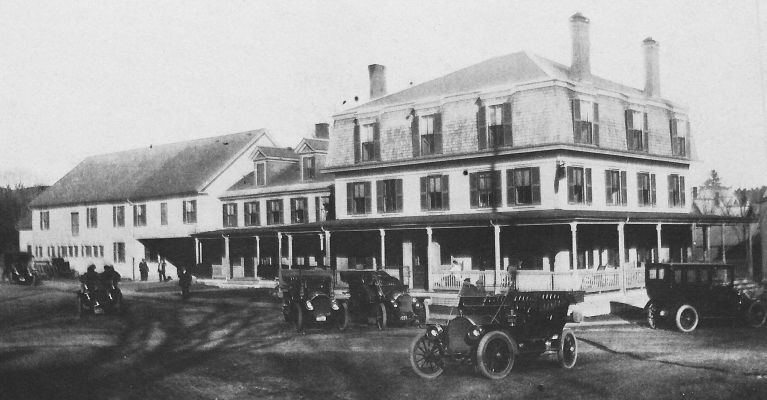
In the 1900s guests began arriving at the Tavern in motorcars.
Unfortunately, the new mobility provided by cars also enabled summer boarders to travel beyond New Boston.
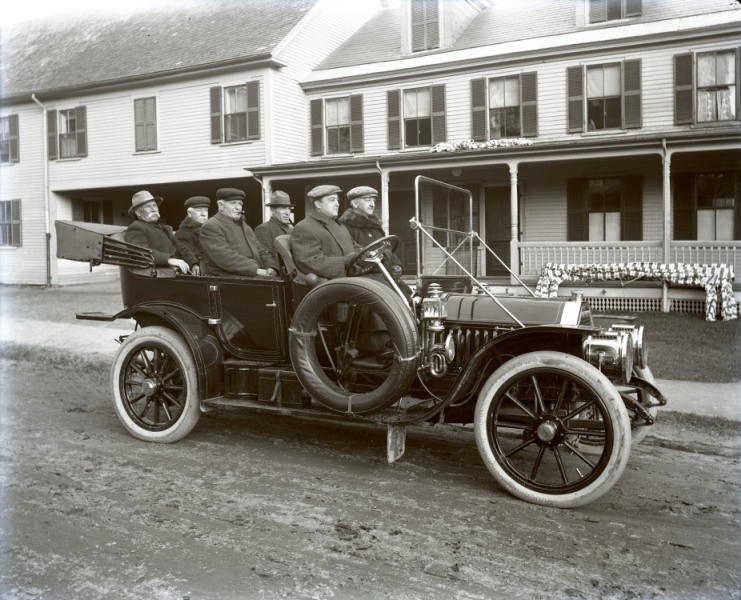
The Manchester Historic Association sent us this wonderful image from their glass negative collection.
We'd guessed the automobile was a Buick, but a car enthusiast named Varun Coutinho identified it as a 1910 Peerless Model 27.
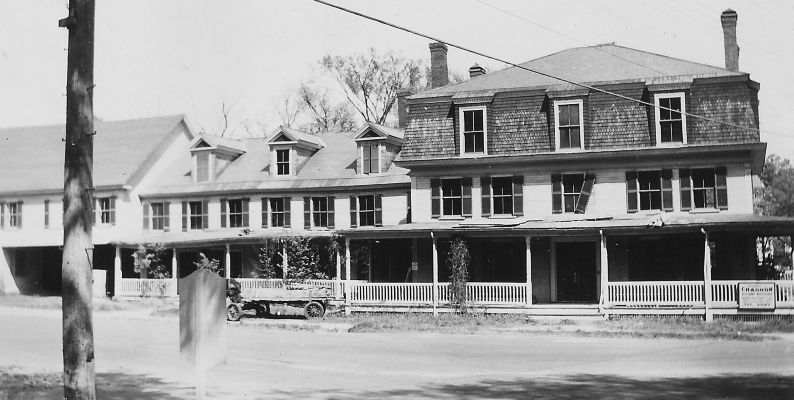
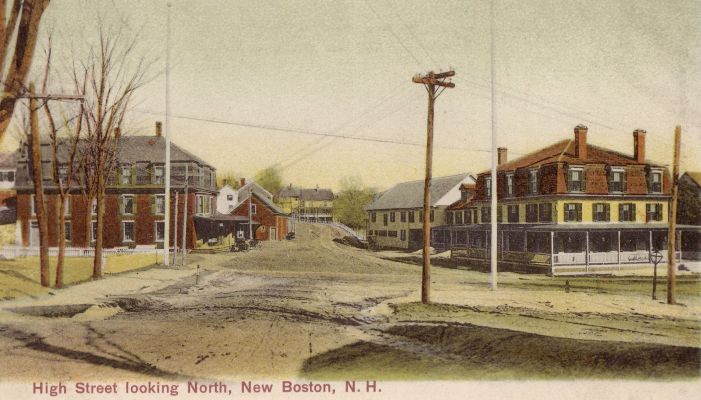
One hundred years ago.
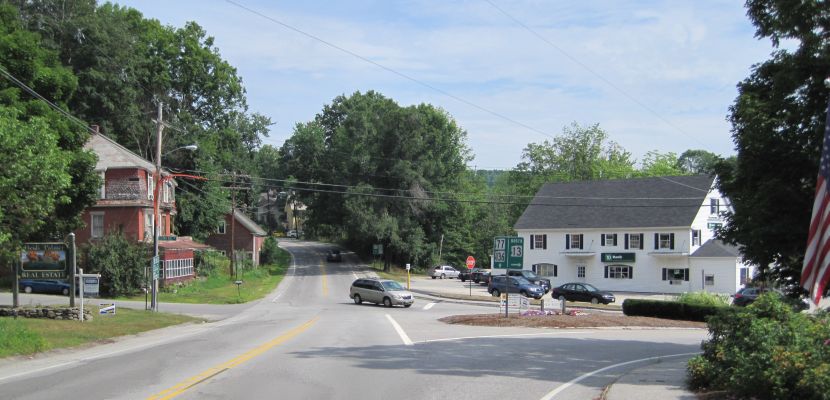
Today the yellow tavern is gone. Its white livery stable was moved in 1976 to become a bank.
(Click here to see a 5/15/1976 photo of the barn halfway to its new foundation.
Click here to see a historical poster which used to hang in the bank.)
One More Photo of the Tavern Carriage
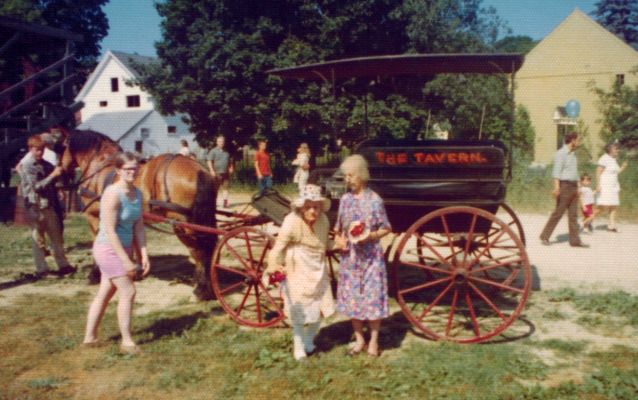
Josie Warren and Elsie Warren pose in front of the Tavern Carriage on July 4, 1975.
Elsie was the librarian at the Whipple Free Library for many years.
Josephine was New Boston's oldest citizen, 99 years old when this photo was taken.
She was born the year General Custer met 2,000 Sioux warriors at the Little Bighorn.
